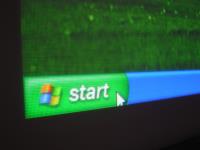Aircrack/Aireplay-ng Under Packet Injection Monitor Mode in Windows
Update (6-27-07): I just found out that the makers of aircrack-ng just made this method easier. Two days after I wrote this article, they released a VMWare image of their entire suite of wireless penetration tools. So, instead of downloading and using the generic BackTrack ISO (step 1 and 5) head over to Aircrack-ng and obtain their version.
Update II (6-27-07): I guess packet injection under Windows is feasible after all! The same time the VMWare aircrack-ng image was released, they also revealed a new USB WiFi adaptor that lets you inject and read packets natively in Windows without the virtualization layer. What’s more, you can use the Wireshark GUI instead of the aircrack-ng command line. Personally, I would still go with the Alfa (read more below) since it has nantenna connector. But that’s just me! 🙂
“…crack a WEP enabled access point within a couple of minutes. 3 minutes to be exact.”
That Digg article piqued our curiosity in high school. My friend and I read about how the FBI publicly demonstrated a successful wireless network crack in a minuscule amount of time. Inspired, we obtained a laptop and searched around our neighborhood for WEP encrypted wireless networks. Our plan was to show these local folks how easy it was to acquire their WEP key. Then, we would convince them that we were good, hirable technicians who could upgrade their WiFi WEP encryption scheme to WPA. We spent literally three days practicing, trying to crack our own network with Windows tools. But in the end, our plan never materialized. Why? We were too “n00b” for Linux.
Crippled Windows Users
 I’ll say it once and I’ll say it again, “I hate being a Windows user.” I hold great respect for computer hackers who are quick to grasp other operating systems, like Linux and OS X, without a problem. But I, having been weaned on Windows since the day I touched a computer, have a hard time operating those unfamiliar user interfaces … or lack thereof. I mean, more than half of Linux is in the shell command line!
I’ll say it once and I’ll say it again, “I hate being a Windows user.” I hold great respect for computer hackers who are quick to grasp other operating systems, like Linux and OS X, without a problem. But I, having been weaned on Windows since the day I touched a computer, have a hard time operating those unfamiliar user interfaces … or lack thereof. I mean, more than half of Linux is in the shell command line!

